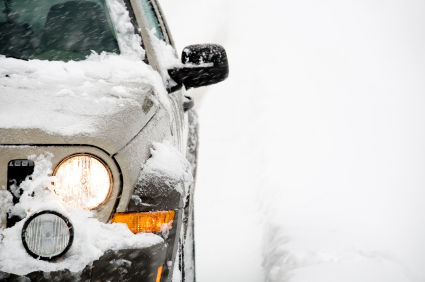1. Make sure you can see. When’s the last time you replaced your windshield wiper blades? They usually work effectively for about one year, so be sure to invest in some new ones if you’re due. Also, fill up your windshield washer reservoir with windshield washer fluid if needed. (Plain water won’t do the trick at this time of year because it freezes.) Also check to see that your heater and defroster are working properly so you can keep the windshield nice and clear.
2. Give your battery a little TLC. This is an ideal time of year to make sure your battery’s posts and connections are corrosion-free and that your battery has all the water it needs. If your battery is more than three years old, have a certified repair shop test its ability to hold a charge.
3. Get the right kind of oil change. Are you approaching the time for a 30,000-mile full service for your vehicle? If so, don’t procrastinate! Among other things, the service should include an oil change, and the oil used should have the right viscosity, or thickness, for your vehicle at this time of year. Oil tends to thicken as it gets colder, and if it’s too thick it won’t do the best job of keeping your engine lubricated. Check your owner’s manual for guidance about which oil to use in different climates and temperatures.
4. Examine your belts and hoses. When you have that full service done on your vehicle, make sure the belts and hoses get checked for wear and tear — even if you’re driving a modern car. Cold weather can do a number on belts and hoses, so they deserve attention.
5. Check your tire pressure. Your tires must be properly inflated to ensure you’ll have the best possible traction as you drive along — and traction is often severely jeopardized in wet, snowy or icy conditions. The air pressure in your tires has likely dropped as the weather has gotten colder, so it’s important to see where things stand now. (You can generally expect that you’ll lose 1 pound per square inch whenever the temperature drops by 10 degrees Fahrenheit.) Again, your trusty owner’s manual will tell you what your target tire pressure should be. It may also be a good time to switch to snow tires if you live in an area where there is a lot of winter snow. You may want to improve traction even more by investing in winter tires and using them over the next few months instead of your usual all-season tires. When shopping for snow tires, ask about all the fees that might be charged, such as fees for mounting and balancing. You can accomplish this easily and make accurate cost comparisons by asking each store for the “out the door charge.”
7. Do you have four-wheel drive? If so, it’s important to check the status of your four-wheel-drive system and be sure it’s working correctly, especially since most drivers don’t use their 4WD systems in the pleasant summer months. Be sure that the system engages and disengages easily, and that everyone knows how and when to activate the system.



